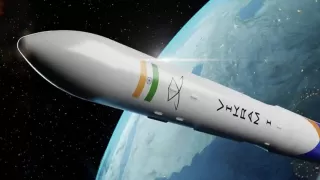The Indian Space & Research Organization (ISRO) is all set to launch the latest spacecraft after the successful landing of Chandrayaan 3. It is to inform you that ISRO is going to Launch Aditya L1 Mission which is the 1st Solar Mission by ISRO. As per details available with us, Aditya L-1 Launch Date is 2nd September 2023 and this mission aims to study the Space Weather and Gases on Sun. You can find the Aditya L1 Mission Details in this post and then you can get to know about the full details. You should know that the Aditya L1 Solar Mission by ISRO is the 1st of its kind and it aims to reach Lagrangian Point (L1) of the Sun Earth Solar System. If you are interested to know about the ISRO Aditya L1 Mission Budget then we want to inform you that it is made on the Rs 400 Crore Budget as on September 2023. You should know that ISRO L1 Launch Vehicle is PSLV-XL on which Spacecraft will reach the Sun’s Orbit. All of us know that ISRO is reaching great heights by giving back to back Successful missions.
Significance to study the Sun
The solar system is affected by solar weather and changes in weather can change the orbits of satellites or shorten their lives. It may also cause power blackouts and other disturbances on Earth. Knowledge of solar events is key to understanding space weather. Hence, to learn about and track Earth-directed storms, and to predict their impact, continuous solar observations are needed. Aditya-L1 spacecraft will be put in orbit around the L1 point to study the storm that emerges from the Sun towards Earth.
What ISRO will study

The Aditya L1 Mission will study
Photosphere (depest layer of the Sun that we can directly observe)
Chromosphere ( The layer about 400 km and 2,100 km above the photosphere)
Corona--the outermost layer of the Sun
Of the seven payloads, four will directly study the Sun, and the remaining three will in situ study particles and fields at the Lagrange point L1.
Aditya-L1 mission to carry seven payloads

The Aditya-L1 mission, aimed at studying the Sun from an orbit around the L1, would carry seven payloads to observe the photosphere, chromosphere and the outermost layers of the Sun, the corona, in different wavebands. Aditya-L1 is a fully indigenous effort with the participation of national institutions.
Why study Sun from Space
The Sun emits radiation/light in nearly all wavelengths along with various energetic particles and magnetic field. The atmosphere of the Earth as well as its magnetic field acts as a protective shield and blocks a number of harmful wavelength radiations including particles and fields. As various radiations don’t reach the surface of the Earth, the instruments from the Earth will not be able to detect such radiation and solar studies based on these radiations could not be carried out. However, such studies can be carried out by making observations from outside the Earth atmosphere i.e., from space. Similarly, to understand how the solar wind particles and magnetic field from the Sun travel through the interplanetary space, measurements are to be performed from a point which is far away from the influence of the Earth’s magnetic field.

List of various solar missions
United States:
NASA launched the Parker Solar Probe in August 2018. In December 2021, Parker flew through the Sun's upper atmosphere, the corona, and sampled particles and magnetic fields there. This was the first time ever that a spacecraft touched the Sun.

In February 2020, NASA joined hands with the European Space Agency (ESA) and launched The Solar Orbiter to collect data to find out how the Sun created and controlled the constantly changing space environment throughout the solar system.
JAPAN:
Japan's JAXA space agency launched its first solar observation satellite, Hinotori (ASTRO-A), in 1981. The objective was to study solar flares using hard X-rays. JAXA's other solar exploratory missions are Yohkoh (SOLAR-A) launched in 1991; SOHO (along with NASA and ESA) in 1995; and Transient Region and Coronal Explorer (TRACE), along with NASA, in 1998.
In 2006, Hinode (SOLAR-B) was launched, which was the successor to Yohkoh (SOLAR-A), the orbiting solar observatory. Japan launched it in collaboration with the US and the UK. The objective of Hinode, an observatory satellite, is to study the impact of the Sun on the Earth.
EUROPE:
In October 1990, the ESA launched Ulysses to study the environment of space above and below the poles of the Sun. Other than solar missions launched in collaboration with NASA and the JAXA, the ESA launched Proba-2 in October 2001.
Proba-2 is the second of the Proba series, building on nearly eight years of successful Proba-1 experience, even as Proba-1 was not a solar exploratory mission. On-Board Proba-2 were four experiments, two of which were solar observation experiments.
Proba stands for Project for On-Board Autonomy. Upcoming solar missions of the ESA include Proba-3, scheduled for 2024, and Smile, scheduled for 2025.
CHINA:
The Advanced Space-based Solar Observatory (ASO-S) was successfully launched by the National Space Science Center, Chinese Academy of Sciences (CAS), on October 8, 2022.
Sun-a mysterious star:
By studying the Sun, scientists learn much more about stars in our Milky Way as well as about stars in various other galaxies.

The sun shows several eruptive phenomena and releases immense amount of energy in the solar system. If such explosive solar phenomena is directed towards the earth, it could cause various types of disturbances in the near earth space environment.
Various spacecraft and communication systems are prone to such disturbances and therefore an early warning of such events is important for taking corrective measures beforehand. In addition to these, if an astronaut is directly exposed to such explosive phenomena, he/she would be in danger.
The various thermal and magnetic phenomena on the Sun are of extreme nature. Thus, the sun also provides a good natural laboratory to understand those phenomena which cannot be directly studied in the lab.
When and where to watch India's maiden solar mission

ISRO will be launching its solar mission Aditya-L1 on September 2, Saturday. The live telecast can be watched on the Doordarshan channel or ISRO's YouTube channel. Other news channels will also show the live telecast Aditya-L1 Mission. ISRO will lauch the mission at 11:50 am (IST) on 2nd September.
Also Read: What Is An Artificial Womb, Innovative treatment or medical research




























